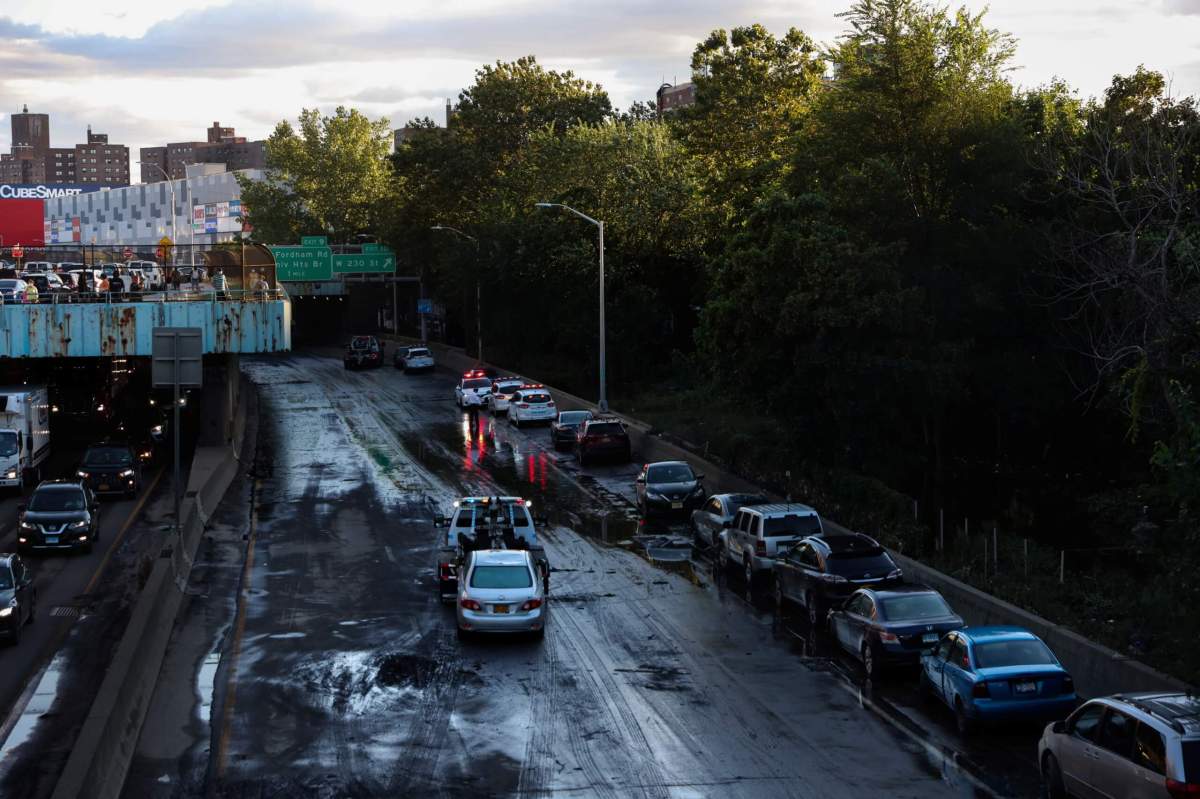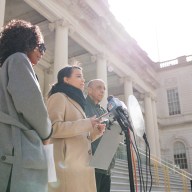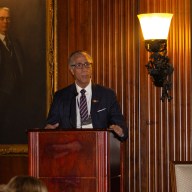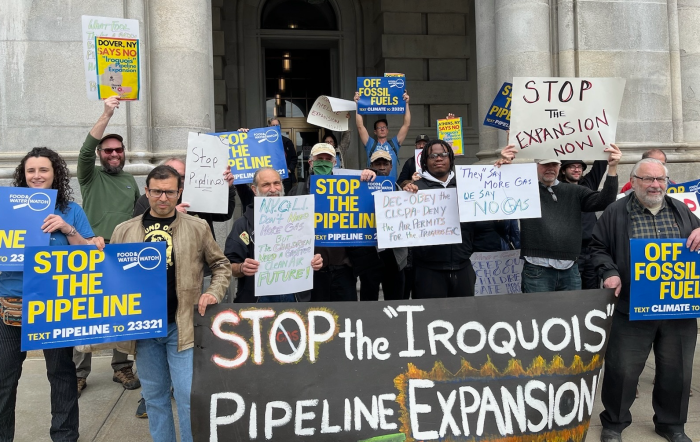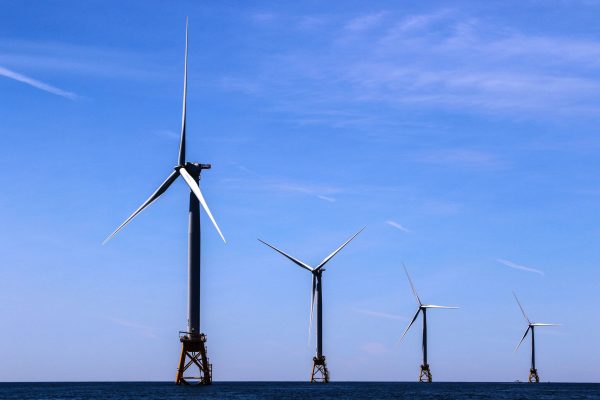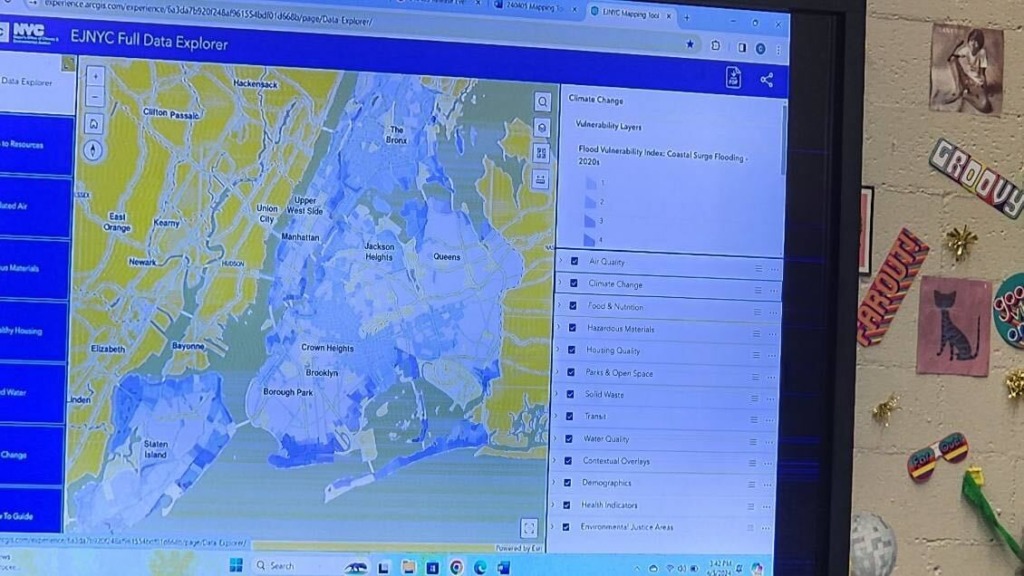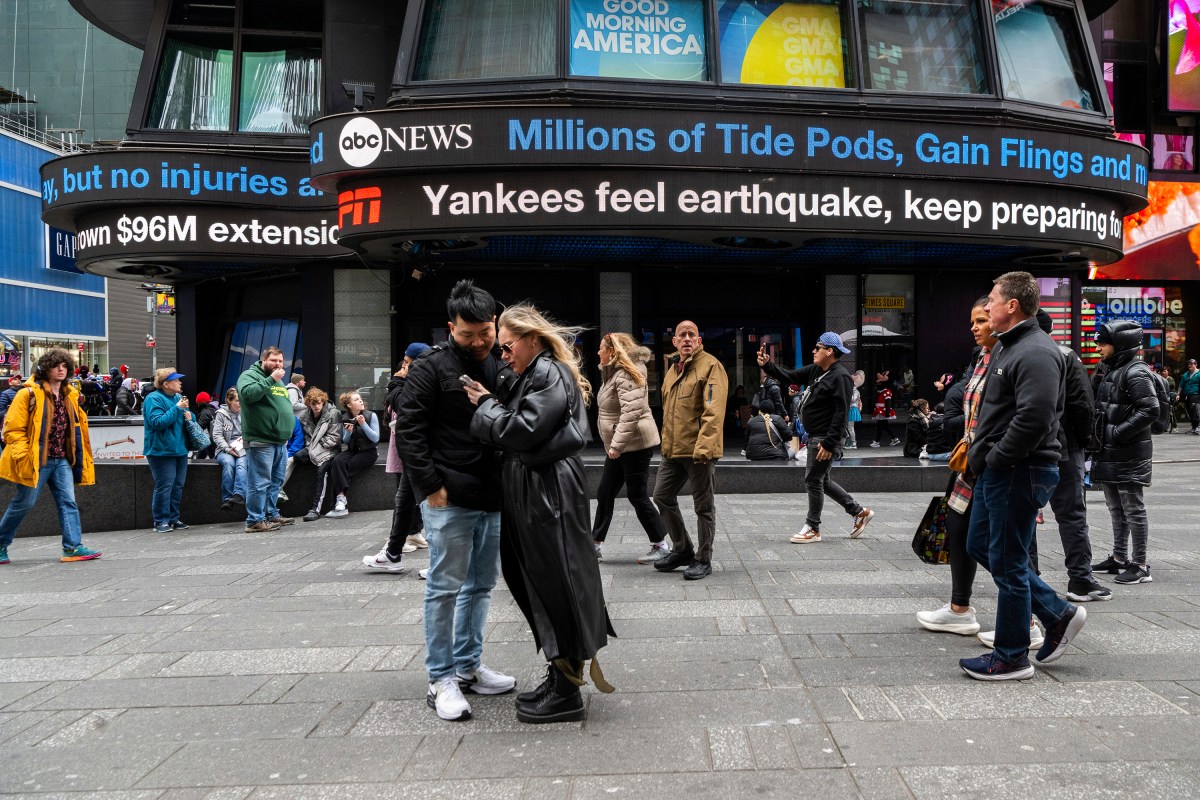Hurricane Ida swept through New York City last week and signaled a climate weather event that flooded major throughways and underground subway stations, and led to the deaths of at least 50 people in the Northeast region.
Fifteen-year-old Emma Buretta estimated that climatic disasters like Ida — once seen as a rarity in the Northeast — will happen a dozen more times over the course of her lifespan if systemic and political action is not taken to address climate change.
“The damage caused by weather events like Hurricane Ida are going to only be more commonplace and more frequent over the next few years,” said Burretta, New York City coordinator for Fridays for Future USA, movement of students striking for climate justice. “And without any political policies in place, the impact and recovery will get worse with each climate event.”
Environmentalists and climatologists have been ringing alarm bells about the unpredictable cycle of climate change, rising flood patterns, and perilous global warming of the planet long before Ida’s Sept. 1 rainfall.
In August, a report by the United Nations’ Intergovernmental Panel on Climate Change (IPCC) painted an especially grim outlook.
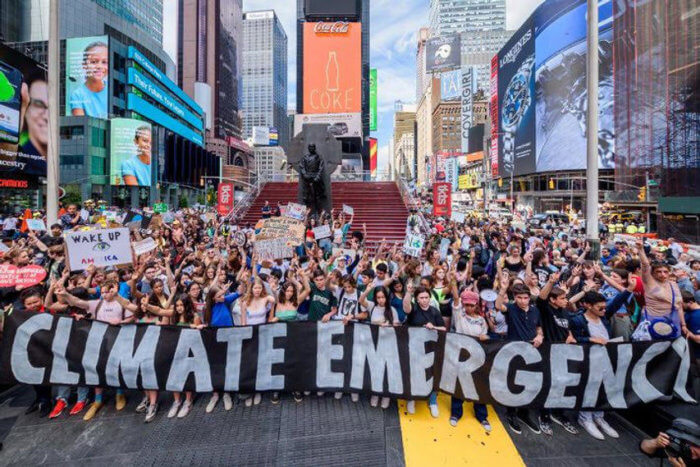
The result of human activity has caused the global surface temperatures to rise faster than in any other 50-year period over the past 2,000 years, meaning a “code red for humanity,” according to the United Nations report.
After a summer that included turbocharged storms, wildfires, hurricanes and coastal floods, 1 out of every 3 Americans has been affected by climate change, according to an analysis of federal disaster declarations.
Summers like this are only expected to be more unpredictable and severe, according to climatologists. Hurricane Ida — the sixth-costliest tropical cyclone on record — has led to national and local calls for effective political action.
White House senior adviser Cedric Richmond said in a media appearance that in wake of Ida’s effect in the Southern and Northeastern sections of the nation, Congress needs to approve pending infrastructure legislation and the administration’s $3.5 trillion mega-spending bill.
“These once-in-a-century storms are starting to come almost every other year,” he said on ABC’s “This Week.“ “They’re bigger, stronger. They wreak more havoc. If you look at New York, New Jersey and Pennsylvania, people should see what climate change is doing. We’re going to address that in our legislation.
On a local level, in the Bronx, groups like the Bronx Council for Environmental Quality (BCEQ) are imploring local leaders to accelerate projects to daylight the Tibbetts Brook, an effort that would redirect overflow water from Van Cortlandt Lake and mitigate the major flooding that Ida caused to Bronx parkways and roadways like the Major Deegan Expressway.
“Decades of overbuilding and disinvestment in the Bronx have made the Major Deegan Expressway an international symbol of urban failure to meet the planning changes demanded by climate change,” Dr. Robert Fanuzzi, president of BCEQ, said. “These changes should not be conditioned on the next weather forecast but should have happened yesterday.”
The BCEQ calls for a green floodplain to absorb stormwater; low impact development to manage runoff, and for the next 30 years, the daylighting of Tibbetts Brook, which flows four miles from the city of Yonkers down to its vanishing point in Van Cortlandt Lake. The process called “daylighting,” is when buried rivers are uncovered and routed above ground.
“How much longer do we have to wait before the city adopts the natural solutions that can prevent further calamity,” asked Fanuzzi.
Tibbetts Brook routes all of its freshwater into the New York City sewer system, sending up to five million gallons a day into an overloaded processing plant on Wards Island.
According to the BCEQ, this water flow has helped to increase flooding in the neighborhoods south of Van Cortlandt Park, where businesses and streets are severely affected. Ida led to an overflooding of Van Courtlandt Lake’s edge which led to massive pooling at the lower part of Van Cortlandt Park. According to the BCEQ, water from the storm routed along the Old Putnam Rail Trail and lead to flooding as far as West 225th Street.
Ida rainfall also overwhelmed the wall of the Major Deegan Expressway, closing I-87 and disrupting commuting Bronxites for days.
A central tenant for modern environmentalist movements is a focus on environmental racism, addressing how communities of color — in the United States, Black and Indigenous communities in particular — face greater harms through increasing climate events.
Burrett said that on Sept. 24, a climate strike will be held at Foley Square in Manhattan at 3 p.m. The hope is that in the wake of Ida, more New Yorkers will use their voice to demand politicians act on climate change.
“One of our major themes is #UprootTheSystem and putting attention to how communities of color will be facing the harshest and severest effect of climate change,” said Burretta. “The tragedy in that is that it has taken people losing their lives for many to see how dire the need for climate change policies in America.”
Reach Robbie Sequeira at rsequeira@schnepsmedia.com or (718) 260-4599. For more coverage, follow us on Twitter @bronxtimes and Facebook @bronxtimes.

